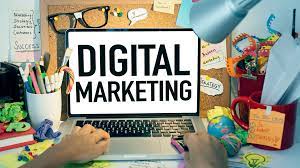As the digital landscape continues to evolve, marketers must find ways to cut through the noise and engage their audiences on a more personal level. One effective way to do this is through personalization, which involves tailoring your marketing efforts to the specific needs and preferences of your target audience.
In this article, we’ll explore the power of personalization in digital marketing, and provide tips and strategies for incorporating it into your marketing campaigns.
Why Personalization Matters
In today’s digital age, consumers are bombarded with more marketing messages than ever before. In fact, the average person sees up to 10,000 brand messages per day. With so much noise, it’s becoming increasingly difficult for marketers to capture their audience’s attention.
This is where personalization comes in. By tailoring your marketing efforts to your audience’s specific needs and preferences, you can cut through the noise and stand out in a crowded market. Personalization can also help you build stronger relationships with your customers, which can lead to increased loyalty and retention.
Tips and Strategies for Personalization in Digital Marketing
Here are some tips and strategies for incorporating personalization into your digital marketing campaigns:
- Use Data to Understand Your Audience
To effectively personalize your marketing efforts, you must first understand your audience. This requires collecting and analyzing data on their behavior, interests, and preferences. Use tools like Google Analytics, social media insights, and customer surveys to gather this data and gain insights into what makes your audience tick.
- Segment Your Audience
Once you have a better understanding of your audience, segment them into smaller groups based on their interests, behaviors, and preferences. This allows you to create more targeted marketing messages that resonate with each group.
- Customize Your Content
Customize your content based on each audience segment. For example, you might create different versions of your website or landing pages for each segment, or tailor your email marketing messages to address their specific pain points.
- Personalize Your Ads
Use data to personalize your ads based on your audience’s interests and behaviors. For example, you might show different ads to users who have previously visited your website, or target users with ads based on their search history or social media activity.
- Use Dynamic Content
Dynamic content allows you to personalize your website content based on the visitor’s behavior or demographics. For example, you might show different product recommendations based on their purchase history or display different messaging based on their location.
Final Thoughts
Personalization is a powerful tool for marketers looking to engage their audiences on a more personal level. By using data to understand your audience, segmenting them into smaller groups, customizing your content, personalizing your ads, and using dynamic content, you can create more targeted and effective marketing campaigns that resonate with your audience and drive results.

